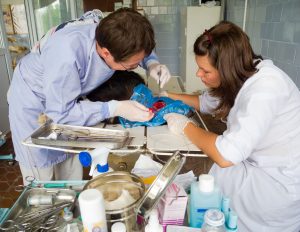How to manage wounds with excessive exudate

Requires membership/payment
This article can be accessed via RCVS Knowledge Library Membership (click here).
In our edition of: Jun 2017
In our categories of: small animals
our summary:
Bell, S. (2017) How to manage wounds with excessive exudates. The Veterinary Nurse, 8(3), pp. 167-173
Wounds that produce excessive exudates can be difficult and challenging to manage. Whilst open wounds require exudate to achieve moist healing, the over-production of exudates or insufficient exudate can be detrimental to the healing process. Knowledge of how to prepare a wound using an aseptic technique and the selection of the most appropriate dressing to manage wound exudate is essential to encourage faster wound healing.
This article reviews the dressing types available and their absorptive capacity including: dry, hydrocolloid, foam, hydrofibre and alginate dressings from simple to superabsorbent quality. It also discusses negative pressure wound therapy as a useful method for managing wound exudates that are not responding to standard dressing applications.
Wound documentation is an important aspect of wound management; the article explains how veterinary nurses have an opportunity to document and record wound changes, during regular re-assessment and dressing changes, using both photographic evidence and detailed notes. Wound assessments considered alongside clinical status and changes in the wound colour, odour or consistency should be recorded along with the patient demeanour as part of the patient nursing plan.
Excessive exudates can prolong wound healing. The choice of dressing materials and knowledge of wound management techniques are essential to achieve optimum wound healing and decrease wound healing times.
Image copyright attribute:
attribute goes here



Connect with us